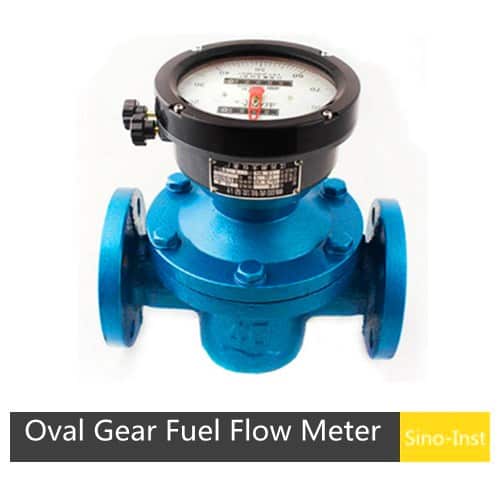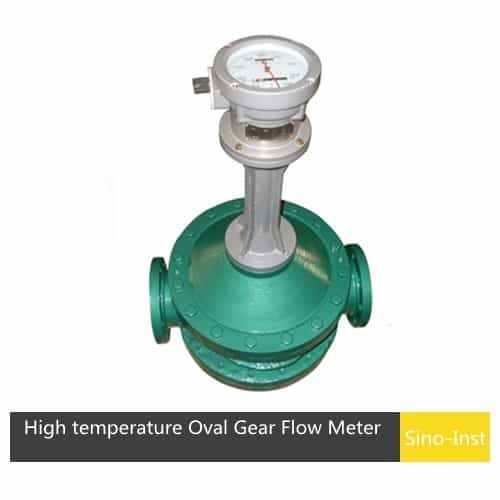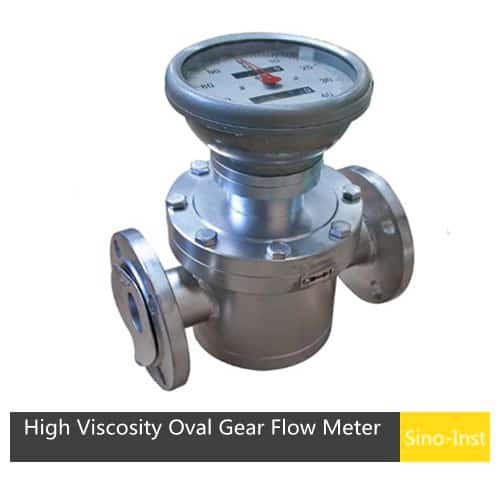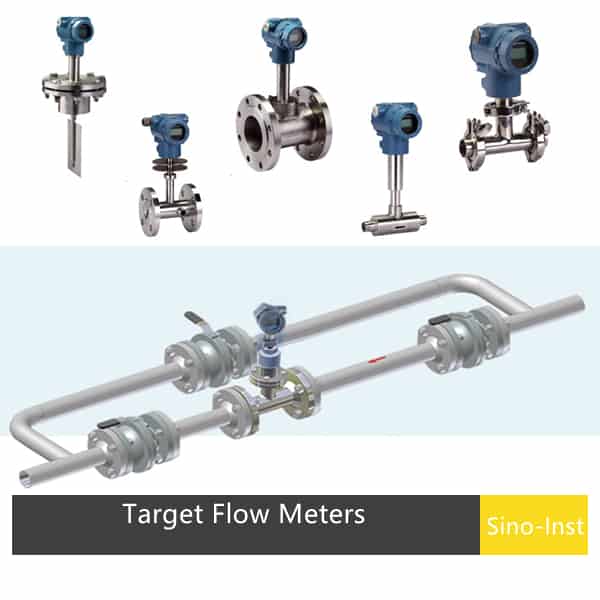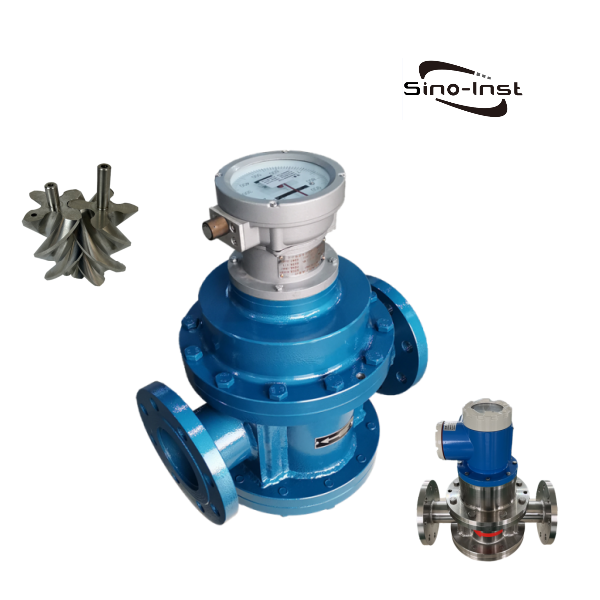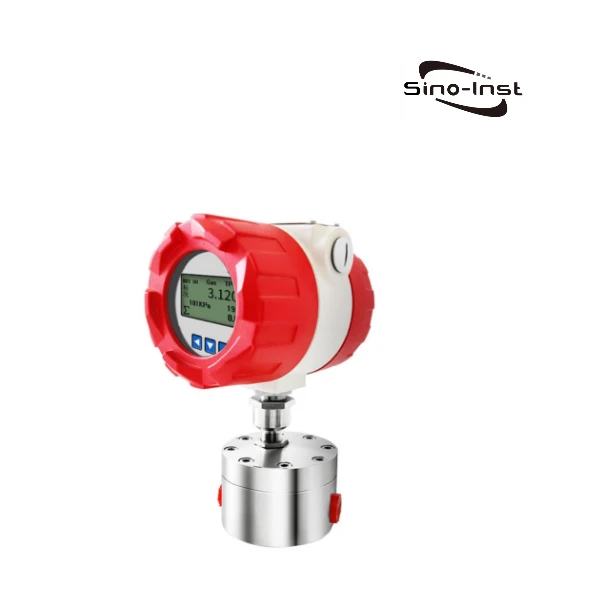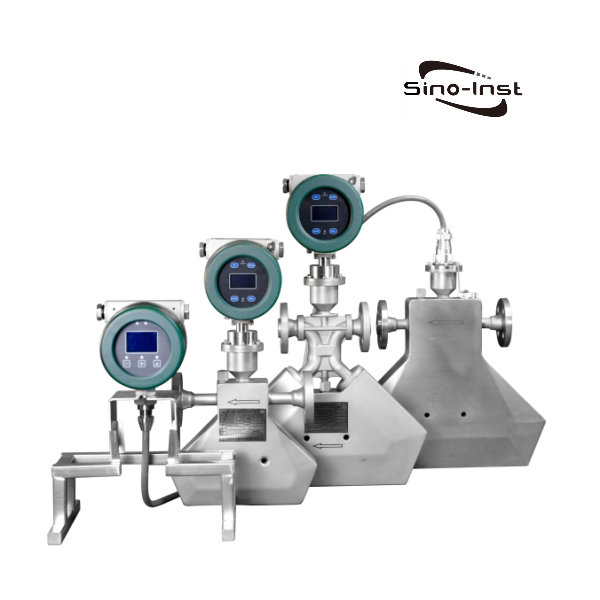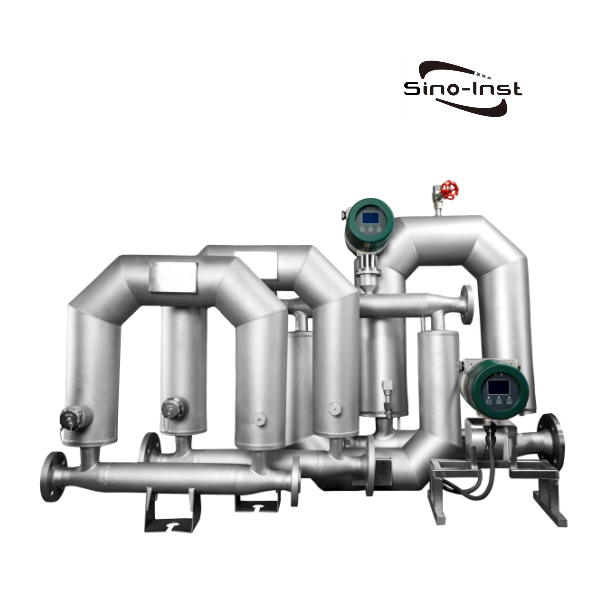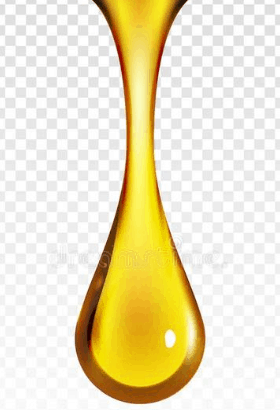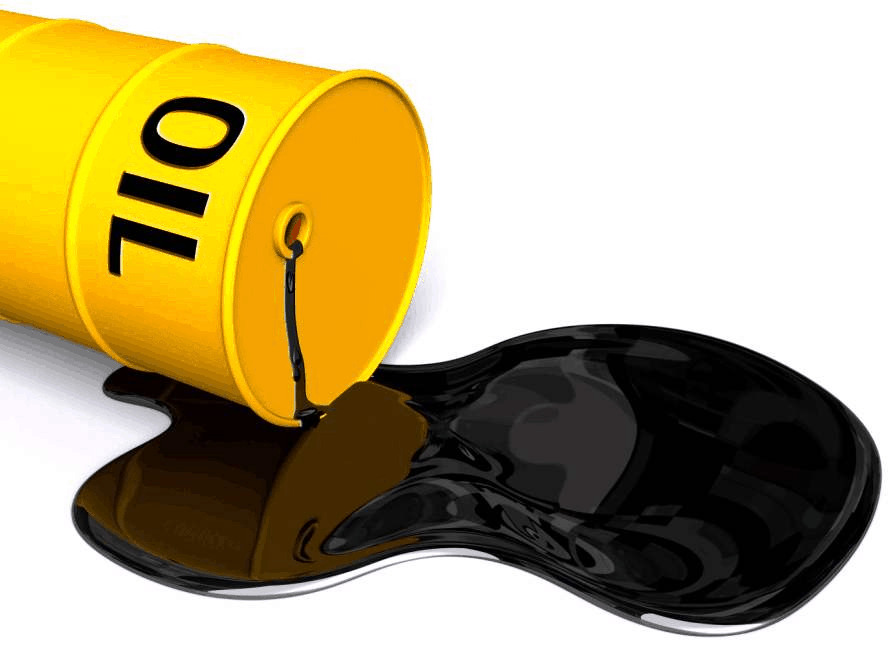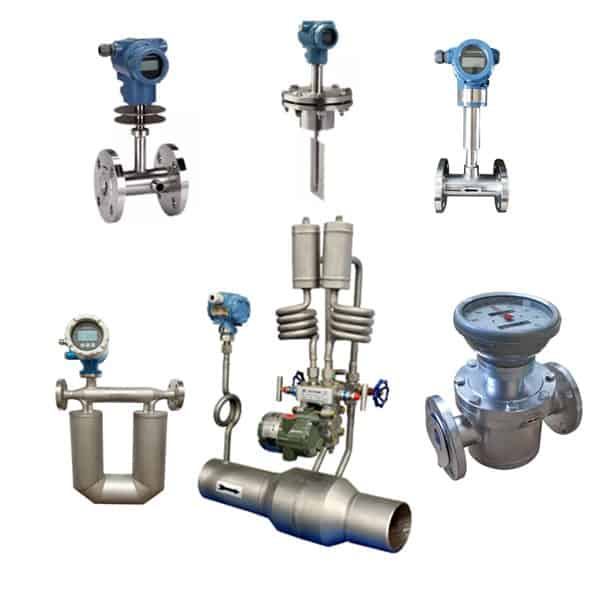
How to measure the flow of viscous liquids? For example: glue, heavy oil, asphalt, etc. Commonly used flow meters may not be suitable. High Viscosity Flow Meters are instruments for measuring the flow of viscous fluids.
Common high viscosity flow meters are: Oval Gear flow meters. Mass flow meters, Target flow meters, and Wedge flow meters also work for viscous liquids.
Liquid viscosity
Viscosity is one of the important factors that affect the flow properties of fluids. Viscosity is a physical quantity that measures the resistance to fluid flow. Common units include dynamic viscosity (Pa·s), kinematic viscosity (m²/s), and Engler viscosity (EN).
Fluids with high viscosity require greater external forces to flow, and the energy loss during the flow process is greater. Fluids with low viscosity are easier to flow and have less energy loss.
Definition of High Viscosity
For the measurement of liquid flow, we generally consider that fluids with a viscosity exceeding 100 mPa·s are highly viscous.
For example, the kinematic viscosity of commonly used asphalt at 60°C is generally 100-300 mPa·s.
Common high viscosity liquids
Common high viscosity liquids are: Crude oil, diesel, and heavy oil. Asphalt, paraffin, honey, methanol, crude benzene, resin, and polyvinyl alcohol. High Viscosity Liquids are also widely used in various industries.
- High viscosity fluids (HVF) are used as raw materials (melted vegetable and animal fats) or finished products (chocolate, ice cream) in the food industry.
- In the construction industry, they are used as liquid phase change materials (PCMs) to store thermal energy in structures or building materials in buildings. For example, liquid concrete, asphalt and tar.
- In the automotive industry, they are used as PCMs for passive cooling of batteries, as well as for many other materials.
Common high viscosity fluids:
- Resin, glue;
- Hydraulic oil, lubricating oil, grease;
- Fuel oil;
- Ink, asphalt;
- Cooking oil, fish oil;
- Glucose;
- Honey;
- 48% sugar;
- And so on. . .
Our Sino-Inst flowmeters can measure the following media viscosities: 0.6-2mPa.s, 2-200mPa.s, 200-1000mPa.s, 1000-2000mPa.s, and the maximum is 400,000cp.
How does viscosity affect flow rate?
Viscosity is a physical property of a fluid that describes the forces between molecules within it. Its magnitude directly affects a fluid’s flow characteristics.
When a fluid passes through a pipe or other medium, it encounters resistance. The greater the viscosity, the stronger the interaction between the fluid and the pipe wall, and the greater the resistance the fluid encounters as it flows through the pipe. Furthermore, the greater the viscosity, the greater the viscous forces, which intensify the fluid’s internal friction and reduce its flow rate.
Thus, the greater the viscosity, the greater the internal friction and the slower the flow rate. The lower the viscosity, the lower the internal friction and the faster the flow rate. Therefore, viscosity and flow characteristics are closely related.
Featured Flow Meters for Viscous Fluid
Next, let’s take a closer look at the characteristics of high viscosity flow meters with superior properties.
Oval Gear Flow Meter – Best Flow Meter for High Viscosity Fluids
Industrial Oval Gear Flow Meters are positive-displacement type volume meters. Sino-Inst offers high-temperature and high-pressure types oval gear flow meters for special use. Oval Gear Flow Meters are suitable for chemical fluids, like: fuel oil, water… With features like easy installation, high precision, and a better price.
When the measured liquid enters the oval gear flowmeter through the pipeline, the pressure difference generated at the inlet and outlet drives a pair of gears to rotate continuously. The liquid measured by the crescent cavity is continuously transported to the outlet. The product of the number of revolutions of the oval gear and four times the displacement each time is the total flow of the measured liquid.
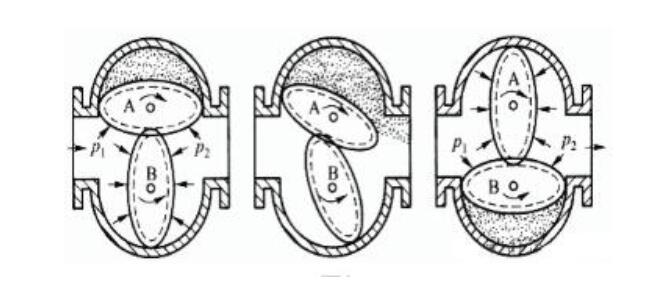
Therefore, it is not difficult to find from the measurement principle of the oval gear flowmeter that it relies on the pressure head of the measured medium to drive the oval gear to rotate for measurement. It has nothing to do with the flow state of the fluid.
When measuring liquids with high viscosity, the leakage from the gap between the gear and the metering space is small. Therefore, the greater the viscosity of the measured liquid, the smaller the leakage error. The more favorable it is for measurement, the higher the measurement accuracy. It can be said that the oval gear flowmeter is the best choice for measuring the flow of high-viscosity liquids.
Coriolis Meter for High Viscosity Fluids
The mass flow meter is an instrument that directly measures the flow of high-viscosity fluids. It has the advantages of high accuracy, good stability, and easy operation.
High-viscosity fluids have large internal friction, and traditional volume flow meters are difficult to accurately measure their flow. The mass flow meter uses a direct measurement method to avoid the errors of traditional volume flow meters. Therefore, it has a wide range of applications in measuring the flow of high-viscosity fluids.
The mass flow meter can also be customized to measure High temperature type: -50~350℃, High pressure type: up to 30MPa.
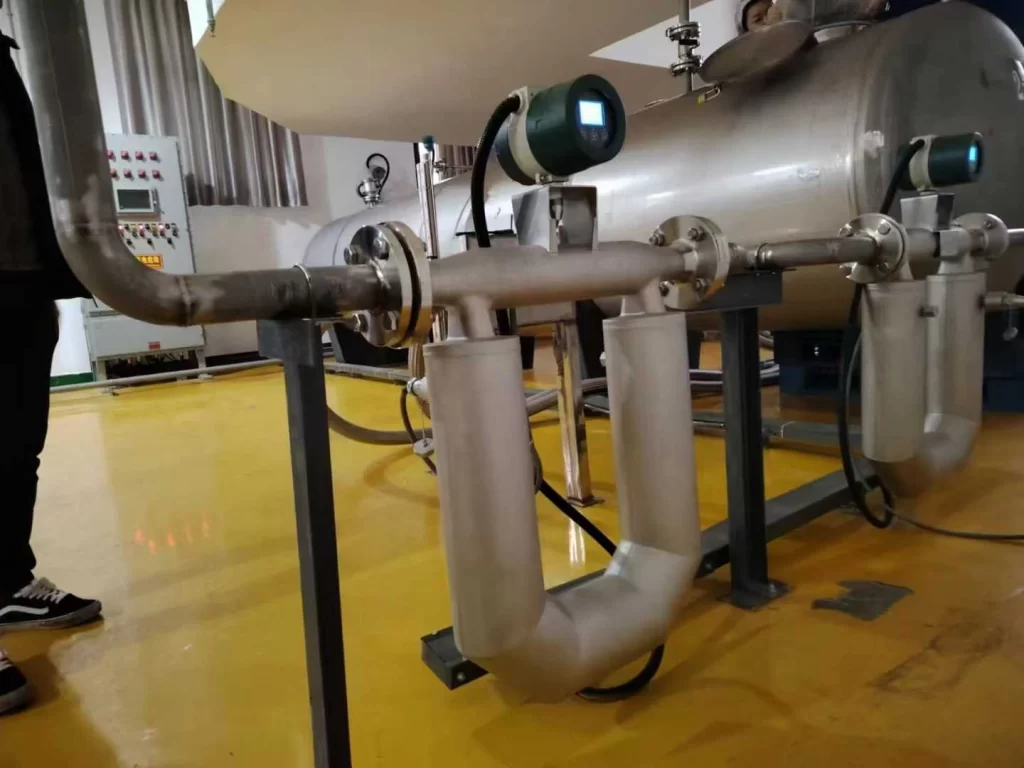
New Gear Flow Meter Customized For: Micro Flow – High Temperature – Low Temperature – High Pressure
The circular gear flowmeter is a new type of high-precision flowmeter. It can be used to measure media under various extreme conditions. Especially for high-viscosity fluids with small flow rates.
- High pressure resistance (1.0-45MPa);
- High and low temperature resistance (-196℃-200℃);
- Can measure various viscous media;
- High precision and high repeatability;
- Pulse output/analog output optional;
- Wide range ratio (1:100);
- Wide measurement range;
- Strong corrosion resistance and anti-fouling ability;
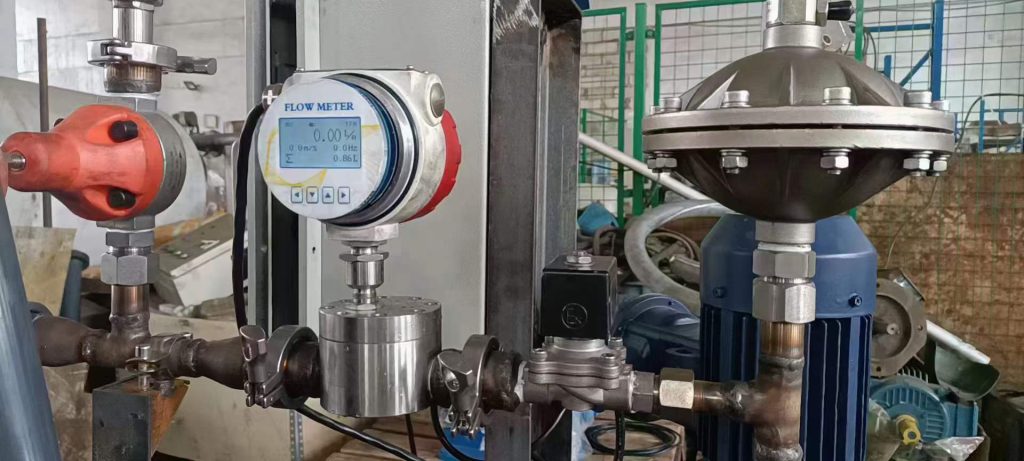
Target Flowmeter Measuring High Viscosity Fluid
The target flowmeter offers exceptional media compatibility. It is particularly well-suited for challenging flow measurement conditions, such as high viscosity, dirty media, media prone to condensation and clogging, high and low temperatures, and severe corrosion.
- High-temperature and high-pressure resistant: from -40°C ~ 450°C, with pressures up to 42 MPa.
- It can measure low-velocity media, with velocities greater than 0.1 m/s (a Reynolds number greater than 1000 is sufficient).
- It can measure high-viscosity media containing sediment.
- The flow range can be adjusted by replacing the load-bearing element as needed.
- Various mounting options are available: clamp-on, flange-mounted, threaded, in-line, sanitary, integrated, or split.
High Viscosity Flow Measurement
High Viscosity flow measurement is an important job for many industries.
High viscosity fluids are thick and hard to pour, and demanding additional power to pump. Such as oil, asphalt/ bitumen, Fructose, molasses, honey, glucose, resin, etc.
Low viscosity media, like pure water or milk, are very thin and easily pumped.
When a flowmeter is applied in high viscosity liquid, you should select an appropriate meter. Lots of different types flow meters cannot measure high viscosity fluid.
Turbine meters, DP flow meters and velocity measuring devices rely on a minimum liquid speed. And they are challenged by high-viscosity fluids. To use these techniques with high viscosity fluids, we can use larger diameter pipes. Larger diameter pipes will maintain line pressure drop and liquid transport costs as low as possible.
Many high viscosity fluid flow meter technologies operate best in the turbulent flow region i.e. with Reynolds numbers above ~2000. This is a dimensionless number that characterises fluid motion.
Sino-Inst’s Turbine flow meters, DP flow meters (like orifice plate) are velocity flowmeters. They both request a mini medium speed. Normally, High viscosity fluid cannot even offer this mini speed.
Choose sanitary flow meter for your pure water or milk.
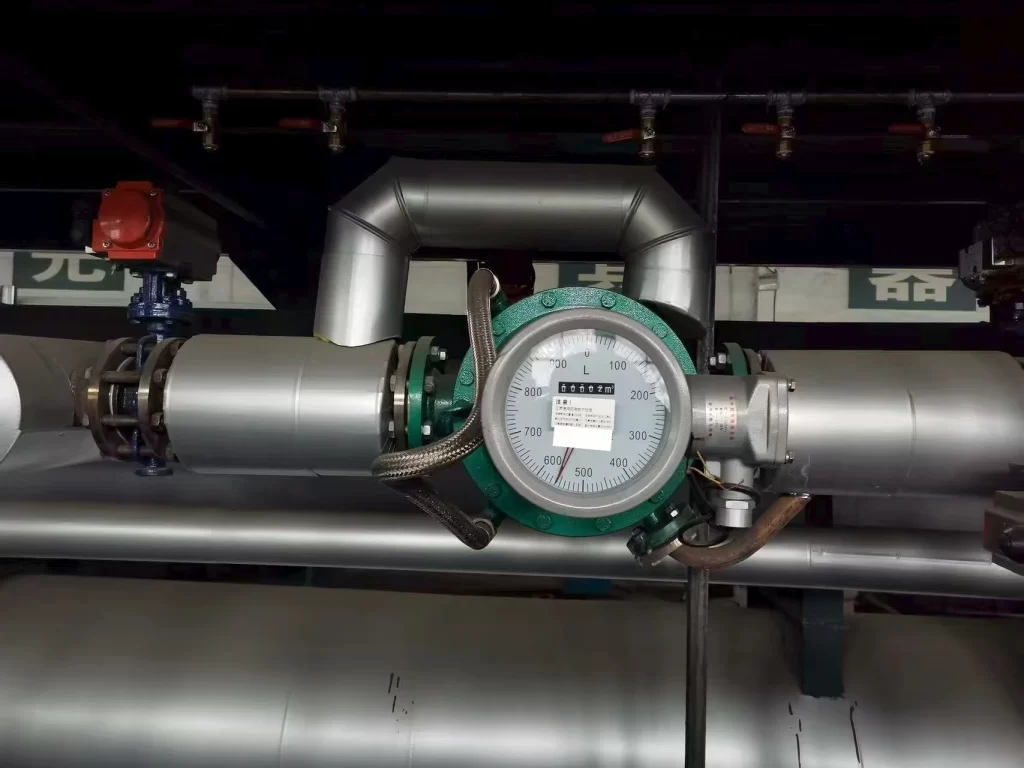
Sino-Inst offers a variety of customized solutions for high-viscosity fluids. In addition to high-viscosity fluid flow meters, we also offer high-viscosity fluid level sensors, high-viscosity fluid pressure sensors, and high-viscosity fluid temperature sensors.
How Does Viscosity Affect the Different Flow Meter Technologies?
Viscosity affects different meters in different ways. Here we briefly discuss. We define “high viscosity” as: more than (say) 1000 cP.
Positive Displacement (PD) Meters
The accuracy of Positive Displacement meters, such as Oval gear meters, are not greatly affected by changes in viscosity, which is one of PD meters’ main advantages. A PD meter can be calibrated at 3 centipoise and be within ±0.5% accuracy in a range of 1 centipoise to 1,000,000 centipoise.
Mass flow meters can measure high-viscosity liquids. But performance can sometimes be compromised. If the pressure drop across the flowmeter limits, accurate flow measurement to the lower part of the flow range.
Magnetic flowmeters can also measure electrically conductive liquids that exhibit high viscosity. As a practical matter, magnetic flowmeters are not often applied to high-viscosity liquid. Because the majority of such applications involve hydrocarbons that are not sufficiently conductive.
Differential pressure and Vortex shedding flowmeters
Differential pressure and vortex shedding flowmeters are generally not applied to high-viscosity liquids. Because of their Reynolds number constraints.
Unless pressure is a concern, you should not need to consider the effect of fluid viscosity if it remains with a range of 3 to 500cP. For oval gear meters equipped with High Viscosity Rotors, that range increases to 3 to 2,000cP.
For liquids with viscosities of less that 3cP, there are several considerations that need to be factored into your final choice of flow meter(s).
- Stated minimum flows need to be adjusted to 10% of the stated maximum flows. For example, the OM006 (1/4 inch) meter has a published range of 0.5 to 27 GPH. If used for measurement of fluids with a viscosity of 3cP or less, adjust the range to 2.7 to 27 GPH.
- Although we can’t offer specifics, accuracy can vary slightly when measuring any liquid that has a viscosity ranging from 1.0 to 3cP that has no lubricating qualities.
- The most difficult fluids to measure with an Oval Gear meter are non-lubricating liquids with viscosities below 1.0cP.
- For fluids with viscosities greater than 2,000 cP, end users should give serious consideration to the use of High Viscosity (HV) rotors. Doing allows for additional flow ranges under similar conditions.
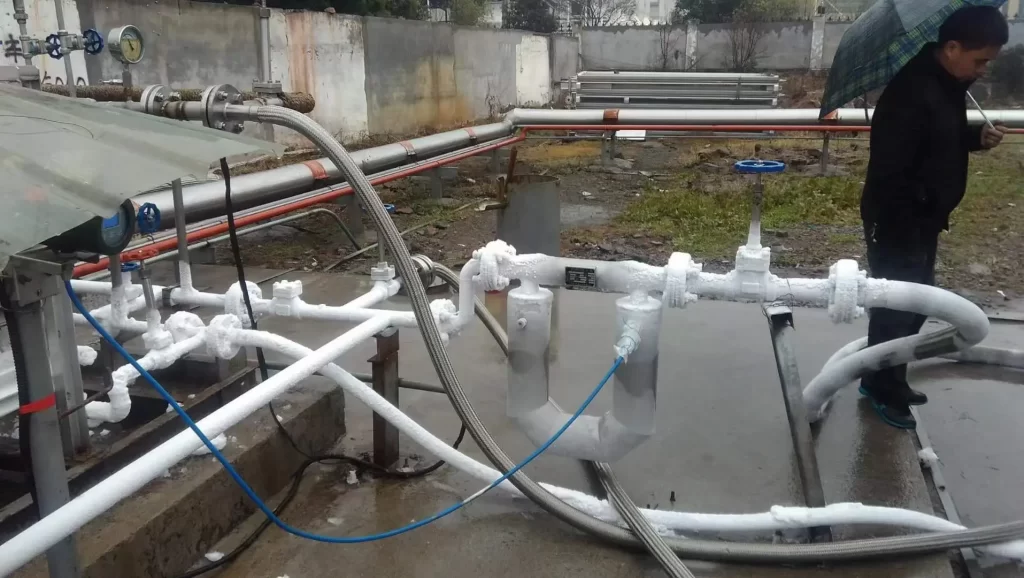
More Flow Measurement Solutions
- Ultrasonic Clamp On Flow Meter – For Easier Water Flow Measurement
- Guide On Industrial Air Flow Measurement Devices
- Everything You Need To Know About Chemical Flow Meters
- Boat Fuel Flow Meters: Installation Tips and Comparability
- Industrial Refrigerant Flow Meters
- Getting to Know The Propane Flow Meters: Better Monitoring of Propane Utilization
- Importance of Digital Fuel Flow Meters and Fuel Oil Flow Meters in Modern-day Industrial Applications
- Techniques, Importance, and Challenges of Natural Gas Flow Measurement
Sino-Inst has many years of experience in flow meter production and supply. We specialize in providing efficient flow measurement solutions for users in various industries.
Whether it is high temperature, high pressure, low temperature, high viscosity or other extreme conditions, we will try our best to meet your measurement needs. If you have any questions, please feel free to contact our engineers!
-1.jpg)
